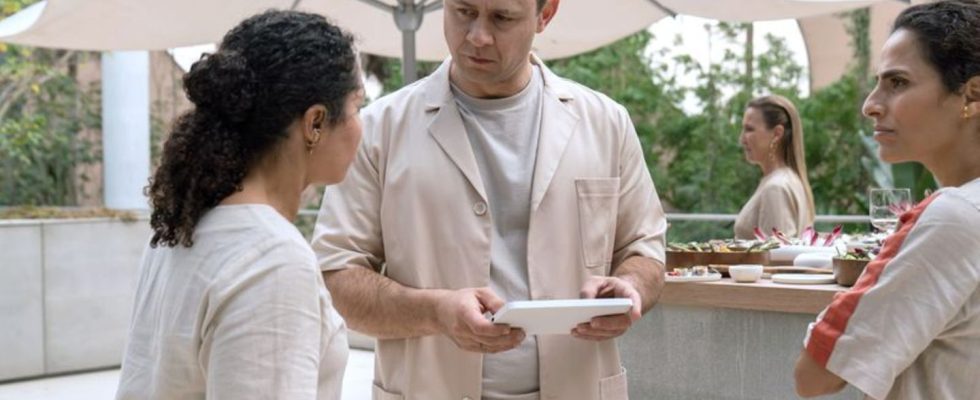TV tip
Medicine of tomorrow: The fourth season of “Charité”
The ARD series “Charité” looks into the future. photo
© Armanda Claro/MDR/ARD/dpa
The fourth season of the hospital series “Charité” takes place in a Berlin of the future with a Mediterranean climate. The series shows what could really be at some point: for example artificial wombs.
A look into Germany’s past, from the perspective of Berlin’s most famous hospital. The makers of “Charité” secured a loyal fan base of millions of viewers.
The ARD series entertainingly presented the medical discoveries of Robert Koch, Rudolph Virchow and Paul Ehrlich. The audience experienced the imperial era, the years of National Socialism and the building of the Wall with the hospital doctors in Berlin. With the fourth season of “Charité” (from April 9th at 8:15 p.m. on Erste, from today on in the ARD media library) we are now heading to the Berlin of the future.
Collaborated with researchers
The city of over a million people will feel the impact of climate change in 2049, with temperatures like those on the Mediterranean. And it’s about the trends of the future, but the plot is not futuristic. “We worked with different researchers and tried to orient ourselves towards reality and create something that could actually be like that at some point,” says the director of the fourth season, Esther Bialas, in an interview with the German Press Agency. “According to the researchers, chance always comes into play – and it can change the future so much that in principle anything is possible.”
The new season, for example, is about a controversial reform that uses a points system to decide who gets treated. A surgeon (played by Adriana Altaras) resists the innovation and from now on treats patients in secret.
Medical possibilities of the future
The previous seasons of the series have always been about the history of medical achievements. Now we will see how the technology could expand medical possibilities in the future. “In theory, artificial wombs are possible. We’re just not there technically yet,” says Bialas. “In the fourth season, however, we show how an embryo is inserted into an artificial uterus in order to be reinserted intact into the woman’s uterus after the woman’s blood has been purified.”
In this “Charité” world, medicine is becoming more sterile, more technical and digital, but in a certain way also more humane. “What could happen if doctors had more time for their patients?” That was one of the questions the makers asked themselves.
“When inventing the story world, we were not able to rely on historical sources as usual, but rather, with the team of medical advisors, we credibly extended the current research areas into the future,” explains Henriette Lippold, producer at UFA Fiction, which staged “Charité”.
“It was exciting to find out where the plausible forecast ends and our wishful thinking begins. We stayed true to our maxim of well-founded research as much as possible, as we did in seasons one to three. Of course, this season remains an experiment that requires a lot of courage heard.”
But Lippold is also prepared for criticism. “Not everyone watching will appreciate the leap into tomorrow. But if you get involved, you can expect the typical “Charité” feeling of emotional stories, medical excellence and exciting views into the world of tomorrow.”
Aside from medicine, there are social issues that the makers have expanded on for the fourth season. For example, climate change: The series was partly filmed in Portugal “to tell the climatic conditions of Berlin in 2049,” as UFA Fiction explained.
The cast shows what already is
The cast of the fourth season was also deliberately cast more diverse, says Bialas. “We wanted to represent what already is – just 25 years later. We have become more global. In this context, it should also be a utopian idea that we have become calmer and more level-headed.”
Unbound by historical facts, the approach this season was different: “We were able to be 1000 percent creative. We filmed in a hospital that was not yet operational.”

